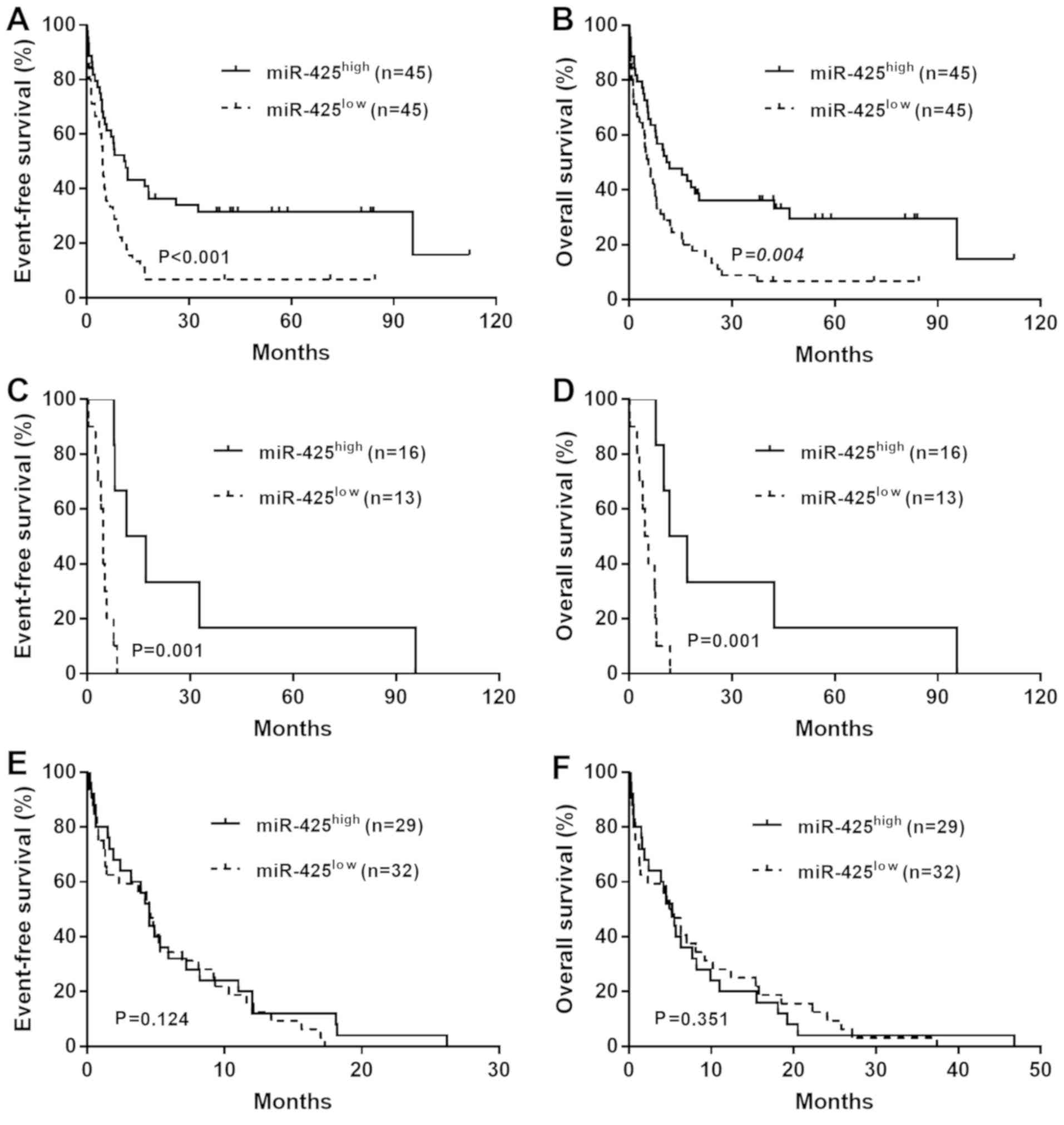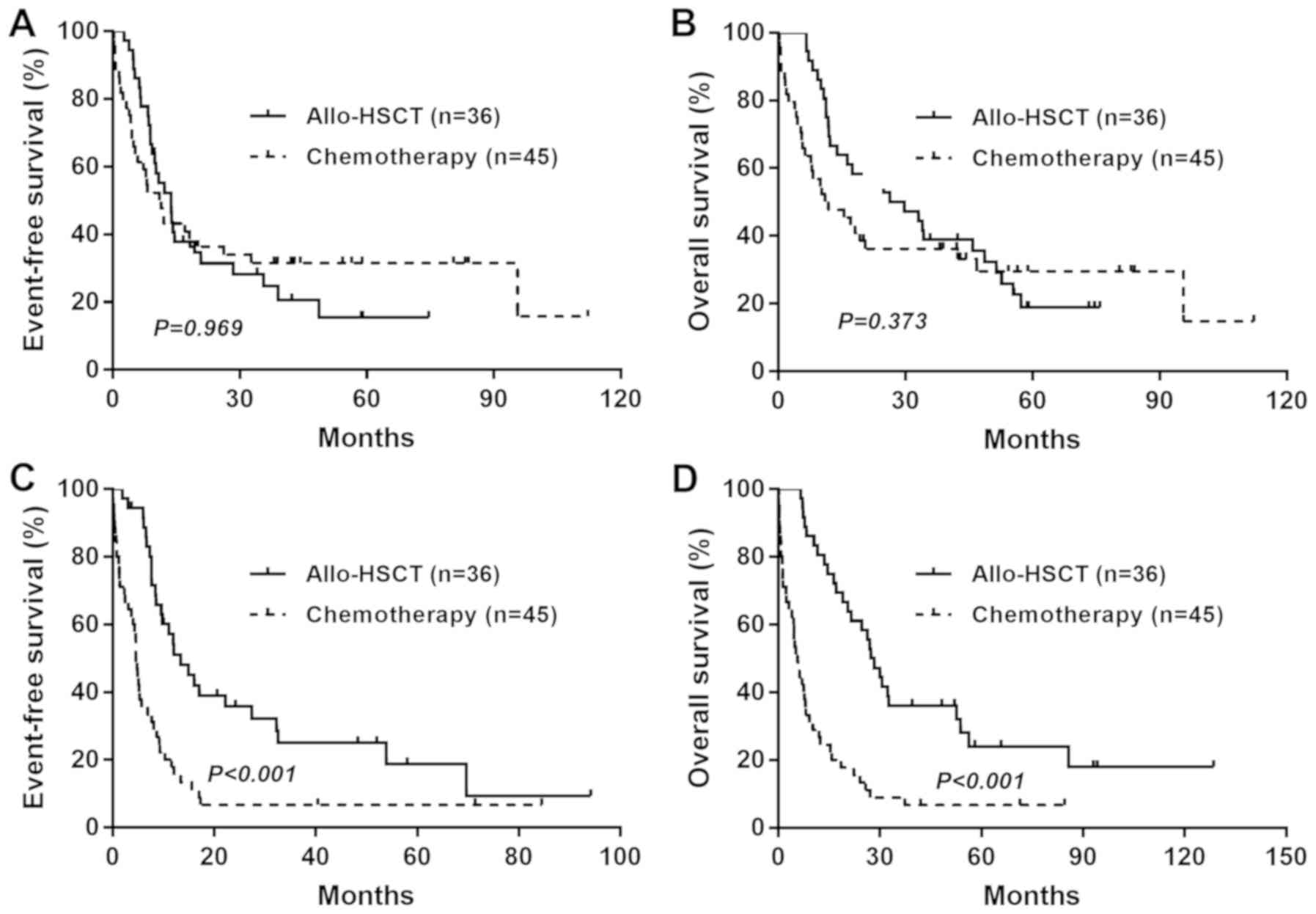|
1
|
Papaemmanuil E, Gerstung M, Bullinger L,
Gaidzik VI, Paschka P, Roberts ND, Potter NE, Heuser M, Thol F,
Bolli N, et al: Genomic classification and prognosis in acute
myeloid leukemia. N Engl J Med. 374:2209–2221. 2016. View Article : Google Scholar : PubMed/NCBI
|
|
2
|
Tsai CH, Hou HA, Tang JL, Liu CY, Lin CC,
Chou WC, Tseng MH, Chiang YC, Kuo YY, Liu MC, et al: Genetic
alterations and their clinical implications in older patients with
acute myeloid leukemia. Leukemia. 30:1485–1492. 2016. View Article : Google Scholar : PubMed/NCBI
|
|
3
|
Ustun C and Marcucci G: Emerging
diagnostic and therapeutic approaches in core binding factor acute
myeloid leukaemia. Curr Opin Hematol. 22:85–91. 2015. View Article : Google Scholar : PubMed/NCBI
|
|
4
|
Dohner H, Estey EH, Amadori S, Appelbaum
FR, Büchner T, Burnett AK, Dombret H, Fenaux P, Grimwade D, Larson
RA, et al: Diagnosis and management of acute myeloid leukemia in
adults: Recommendations from an international expert panel, on
behalf of the european leukemianet. Blood. 115:453–474. 2010.
View Article : Google Scholar : PubMed/NCBI
|
|
5
|
Dohner H, Estey E, Grimwade D, Amadori S,
Appelbaum FR, Büchner T, Dombret H, Ebert BL, Fenaux P, Larson RA,
et al: Diagnosis and management of AML in adults: 2017 ELN
recommendations from an international expert panel. Blood.
129:424–447. 2017. View Article : Google Scholar : PubMed/NCBI
|
|
6
|
Brunetti L, Gundry MC and Goodell MA:
DNMT3A in Leukemia. Cold Spring Harb Perspect Med. 7:a0303202017.
View Article : Google Scholar : PubMed/NCBI
|
|
7
|
Meyer SC and Levine RL: Translational
implications of somatic genomics in acute myeloid leukaemia. Lancet
Oncol. 15:e382–e394. 2014. View Article : Google Scholar : PubMed/NCBI
|
|
8
|
Metzeler KH, Herold T, Rothenberg-Thurley
M, Amler S, Sauerland MC, Görlich D, Schneider S, Konstandin NP,
Dufour A, Bräundl K, et al: Spectrum and prognostic relevance of
driver gene mutations in acute myeloid leukemia. Blood.
128:686–698. 2016. View Article : Google Scholar : PubMed/NCBI
|
|
9
|
Patel JP, Gonen M, Figueroa ME, Fernandez
H, Sun Z, Racevskis J, Van Vlierberghe P, Dolgalev I, Thomas S,
Aminova O, et al: Prognostic relevance of integrated genetic
profiling in acute myeloid leukemia. N Engl J Med. 366:1079–1089.
2012. View Article : Google Scholar : PubMed/NCBI
|
|
10
|
Marcucci G, Mrozek K, Radmacher MD, Garzon
R and Bloomfield CD: The prognostic and functional role of
microRNAs in acute myeloid leukemia. Blood. 117:1121–1129. 2011.
View Article : Google Scholar : PubMed/NCBI
|
|
11
|
Zhou X, Wen W, Shan X, Zhu W, Xu J, Guo R,
Cheng W, Wang F, Qi LW, Chen Y, et al: A six-microRNA panel in
plasma was identified as a potential biomarker for lung
adenocarcinoma diagnosis. Oncotarget. 8:6513–6525. 2017.PubMed/NCBI
|
|
12
|
Garzon R, Marcucci G and Croce CM:
Targeting microRNAs in cancer: Rationale, strategies and
challenges. Nat Rev Drug Discov. 9:775–789. 2010. View Article : Google Scholar : PubMed/NCBI
|
|
13
|
Garzon R, Volinia S, Liu CG,
Fernandez-Cymering C, Palumbo T, Pichiorri F, Fabbri M, Coombes K,
Alder H, Nakamura T, et al: MicroRNA signatures associated with
cytogenetics and prognosis in acute myeloid leukemia. Blood.
111:3183–3189. 2008. View Article : Google Scholar : PubMed/NCBI
|
|
14
|
Schwind S, Maharry K, Radmacher MD, Mrózek
K, Holland KB, Margeson D, Whitman SP, Hickey C, Becker H, Metzeler
KH, et al: Prognostic significance of expression of a single
microRNA, miR-181a, in cytogenetically normal acute myeloid
leukemia: A cancer and leukemia group B study. J Clin Oncol.
28:5257–5264. 2010. View Article : Google Scholar : PubMed/NCBI
|
|
15
|
Sun SM, Rockova V, Bullinger L, Dijkstra
MK, Döhner H, Löwenberg B and Jongen-Lavrencic M: The prognostic
relevance of miR-212 expression with survival in cytogenetically
and molecularly heterogeneous AML. Leukemia. 27:100–106. 2013.
View Article : Google Scholar : PubMed/NCBI
|
|
16
|
Zhang Z, Wen M, Guo J, Shi J, Wang Z, Tan
B, Zhang G, Zheng X and Zhang A: Clinical value of miR-425-5p
detection and its association with cell proliferation and apoptosis
of gastric cancer. Pathol Res Pract. 213:929–937. 2017. View Article : Google Scholar : PubMed/NCBI
|
|
17
|
Fang F, Song T, Zhang T, Cui Y, Zhang G
and Xiong Q: MiR-425-5p promotes invasion and metastasis of
hepatocellular carcinoma cells through SCAI-mediated dysregulation
of multiple signaling pathways. Oncotarget. 8:31745–31757.
2017.PubMed/NCBI
|
|
18
|
Zhang Y, Hu X, Miao X, Zhu K, Cui S, Meng
Q, Sun J and Wang T: MicroRNA-425-5p regulates chemoresistance in
colorectal cancer cells via regulation of programmed cell death 10.
J Cell Mol Med. 20:360–369. 2016. View Article : Google Scholar : PubMed/NCBI
|
|
19
|
Sun L, Jiang R, Li J, Wang B, Ma C, Lv Y
and Mu N: MicoRNA-425-5p is a potential prognostic biomarker for
cervical cancer. Ann Clin Biochem. 54:127–133. 2017. View Article : Google Scholar : PubMed/NCBI
|
|
20
|
Yan YF, Gong FM, Wang BS and Zheng W:
MiR-425-5p promotes tumor progression via modulation of CYLD in
gastric cancer. Eur Rev Med Pharmacol Sci. 21:2130–2136.
2017.PubMed/NCBI
|
|
21
|
Liu P, Hu Y, Ma L, Du M, Xia L and Hu Z:
miR-425 inhibits melanoma metastasis through repression of PI3K-Akt
pathway by targeting IGF-1. Biomed Pharmacother. 75:51–57. 2015.
View Article : Google Scholar : PubMed/NCBI
|
|
22
|
Cancer Genome Atlas Research Network, .
Genomic and epigenomic landscapes of adult de novo acute myeloid
leukemia. N Engl J Med. 368:2059–2074. 2013. View Article : Google Scholar : PubMed/NCBI
|
|
23
|
Conway O'Brien E, Prideaux S and Chevassut
T: The epigenetic landscape of acute myeloid leukemia. Adv Hematol.
2014:1031752014.PubMed/NCBI
|
|
24
|
Marcucci G, Metzeler KH, Schwind S, Becker
H, Maharry K, Mrózek K, Radmacher MD, Kohlschmidt J, Nicolet D,
Whitman SP, et al: Age-related prognostic impact of different types
of DNMT3A mutations in adults with primary cytogenetically normal
acute myeloid leukemia. J Clin Oncol. 30:742–750. 2012. View Article : Google Scholar : PubMed/NCBI
|
|
25
|
Gupta V, Tallman MS and Weisdorf DJ:
Allogeneic hematopoietic cell transplantation for adults with acute
myeloid leukemia: Myths, controversies, and unknowns. Blood.
117:2307–2318. 2011. View Article : Google Scholar : PubMed/NCBI
|
|
26
|
Schmid C, Labopin M, Socie G, Daguindau E,
Volin L, Huynh A, Bourhis JH, Milpied N, Cornelissen J, Chevallier
P, et al: Outcome of patients with distinct molecular genotypes and
cytogenetically normal AML after allogeneic transplantation. Blood.
126:2062–2069. 2015. View Article : Google Scholar : PubMed/NCBI
|
















